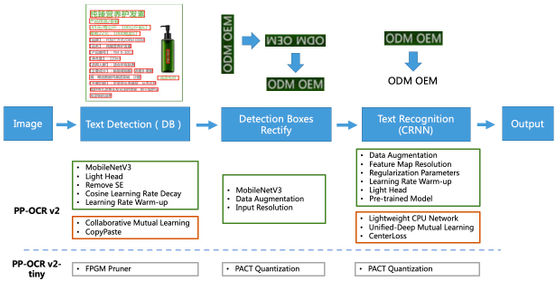Open source OCR 'Paddle OCR' review that recognizes characters in images

PaddleOCR --a Hugging Face Space by akhaliq
https://huggingface.co/spaces/akhaliq/PaddleOCR
GitHub --PaddlePaddle / PaddleOCR: Awesome multilingual OCR toolkits based on PaddlePaddle (practical ultra lightweight OCR system, support 80+ languages recognition, provide data annotation and synthesis tools, support training and deployment among server, mobile, embedded and IoT devices)
https://github.com/PaddlePaddle/PaddleOCR#PP-OCRv2
PaddleOCR and PP-OCRv2 are based on the deep learning framework 'PaddlePaddle' developed by Baidu. PP-OCRv2, developed by technical researcher Yuning Du and others, recognizes 80 languages including Chinese, English, and Japanese by deep learning and outputs them as text. It is said that it has been developed as open source, with efficiency and speedup.

Paddle OCR, which is a demo version of PP-OCR v2, has been released, so I will actually use it. First, access

Click the part on the left side of the screen that says 'Drop Image Here or Click to Upload' to open the explorer. Select the image you want to perform OCR and upload it.

When the upload is complete, select the language you want to analyze from 'language' and click 'Submit'. This time, I will analyze it in Japanese.

After a while, the analysis was completed and the result was displayed as an image file on the right side of the screen. The analysis took 78.69 seconds. The analysis result is output as an image file, so you cannot copy the text.

Looking at the analysis results in detail, it looks like this. The textual information read from each paragraph and its accuracy are indicated by numbers. I read words such as 'fruit mixed juice' and 'raw material name', but I can see the roughness with a little accuracy, such as '/' being 'no' and 'ml' being '0'.

Next, I will try it with the package of the

When I analyzed it with Japanese settings, I found that 'PlayStation' was read as 'PIqy5LatI0n' and 'Wireless Controler' was read as 'WIrelesSContr0ler'. It took 1.91 seconds.

When I changed the analysis language to English and analyzed it again, it read with fairly high accuracy, so it is good to change the language setting when reading the alphabet.

PaddleOCR can read with fairly high accuracy in English, but it seems that the accuracy is not good in Japanese probably because it is a demo version. I started using it thinking that I could use it like 'reading the contents of the package of a product written in a foreign language that I do not know well', but since it is not output as text, I can not use it like that, it is just a demo version I was keenly aware of that.
The Paddle OCR toolkit is distributed on GitHub.
Related Posts:
in Web Service, Review, Posted by log1p_kr







